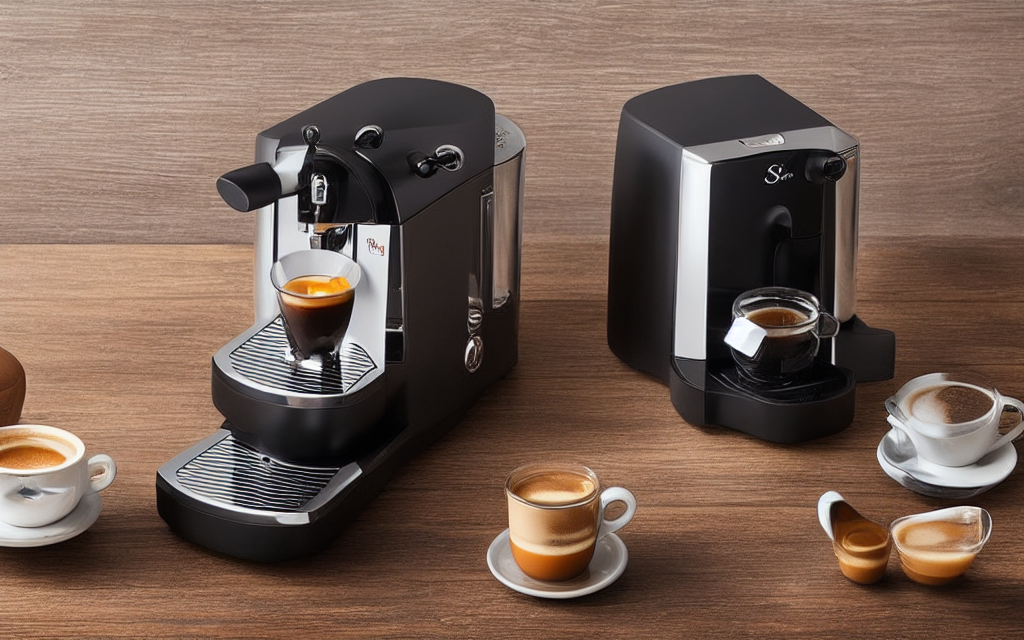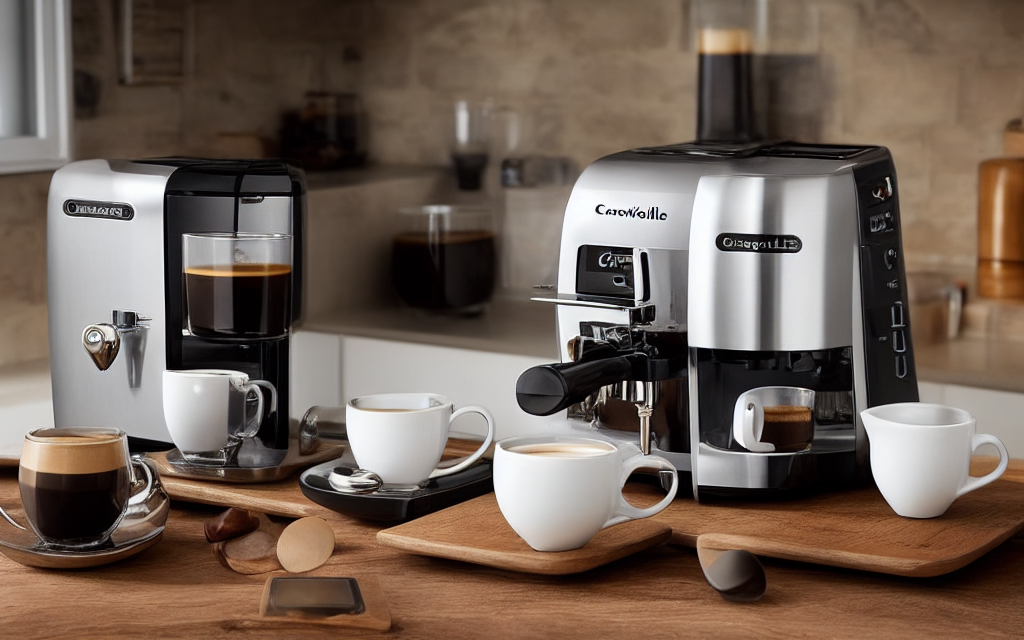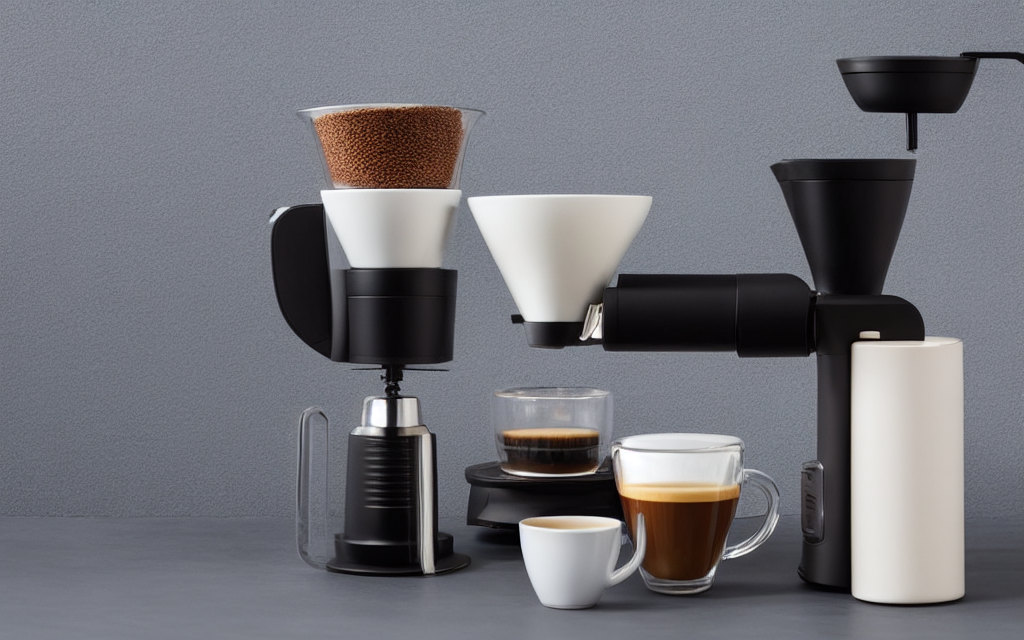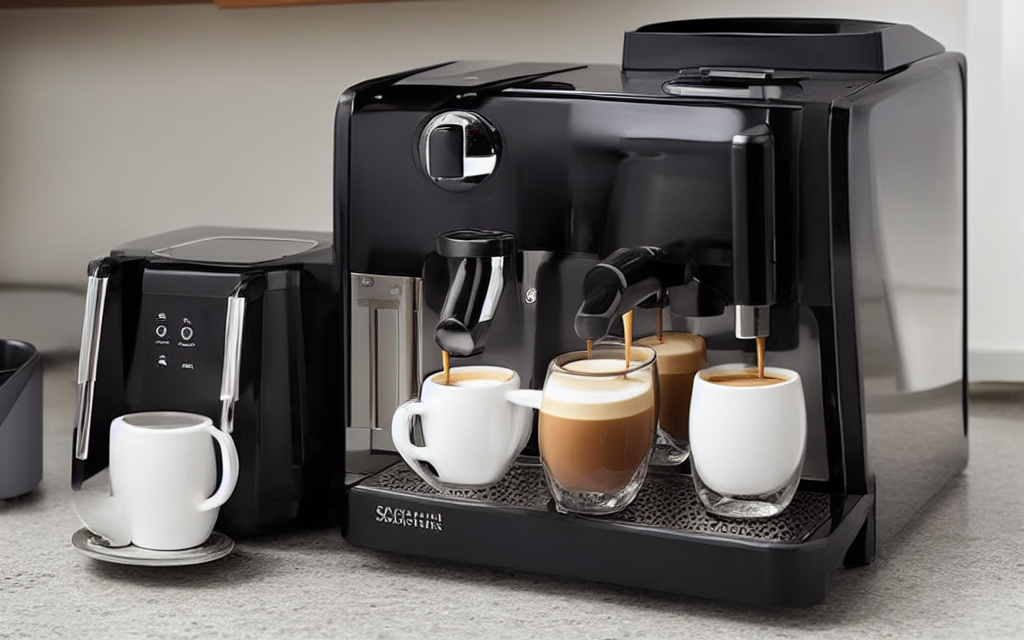What is the best small espresso machine for home use?
The dream of pulling perfectly textured espresso shots from the comfort of your own kitchen is within reach, even with limited counter space. Finding the best small espresso machine for home use doesn't mean compromising on quality or performance. It means understanding the different types of machines available, their unique features, and what constitutes "small" in the world of espresso. Whether you're a busy professional needing a quick caffeine fix, a couple with limited counter space, or a budding barista-to-be practicing their craft, a well-chosen compact machine can transform your mornings and elevate your coffee experience dramatically.
Sponsored placement reserved
Configure project monetization rules or AdSense slot IDs to activate this position automatically.
The key to finding your perfect small espresso machine lies in understanding your priorities: brew quality, speed, ease of use, noise level, portability, and budget. Some machines focus purely on speed and convenience, while others prioritize the nuances of flavor extraction. This guide will walk you through the different types of small espresso machines, highlight the top contenders in each category, and help you determine which one is truly the best fit for your specific home environment and coffee aspirations.
Types of Small Espresso Machines
When searching for the best small espresso machine, it's crucial to understand the different categories you're working with. Each type offers distinct advantages and trade-offs in terms of size, brewing method, speed, and complexity. Here's a breakdown of the primary types you're likely to encounter:
Level Up Your Know-How
Get actionable frameworks, checklists, and templates delivered every Monday to keep your skills sharp.
We respect privacy. Unsubscribe anytime.

Types of Small Espresso Machines
Moka Pot (Brevipresso): Often considered the most compact and affordable option, the Moka Pot is actually more of a stovetop pressure brewer. It uses boiling water pressure to extract coffee, resulting in a robust, espresso-like brew, though it doesn't produce the crema characteristic of traditional espresso. Its incredibly small footprint makes it ideal for tiny kitchens or dorm rooms. Cons: Requires stovetop heat, takes longer to brew, and the taste profile is distinct from pressure-brewed espresso.
Manual Pump Drip (or Moka Express): This is the quintessential "small espresso machine." These are compact, often Italian design, leveraged pump machines that force hot water through ground coffee at relatively low pressure. They offer the smallest physical footprint and are often the most budget-friendly pressure espresso machine. Cons: Requires skill to operate (adjusting water pressure via the lever), the brew quality can vary significantly based on user technique, and the extraction pressure is generally lower than professional machines.
Single-Group Manual/Semi-Automatic Espresso Machines: This is arguably the most popular category for "small" espresso machines in a home setting. These machines feature a single portafilter and group head, allowing for one shot (or the beginnings of a double) at a time. They can be:
- Fully Manual: You control the water flow entirely, requiring more skill but offering the most control over extraction. Very compact.
- Semi-Automatic: Features a manual lever for controlling water flow, often with an automatic boiler to heat water. This is the most common type for home use due to its balance of control, quality, and ease of use compared to fully automatic models. Pros: Offers excellent control, consistent shots with practice, compact size compared to multi-group machines. Cons: Requires learning proper technique (tamping, pre-infusion, shot timing).
Compact Fully Automatic Espresso Machines: While fully automatic machines can be bulky, manufacturers have created smaller iterations specifically for home use. These machines handle everything from tamping and dosing to brewing and frothing with the push of a button. Pros: Fastest, easiest operation, often include built-in milk frothing steam wands, very compact designs exist. Cons: Less control over the brewing process, often compromises on coffee puck quality and extraction consistency compared to manual/semi-automatics, can be slightly noisier than smaller machines.
Espresso Capsule Machines (like Nespresso, Dolce Gusto): While not strictly espresso, these machines brew a concentrated coffee similar in strength and format to espresso using pre-measured capsules. They are extremely compact and offer incredible convenience with programmable settings. Pros: Speed, consistency, no grinding or tamping needed, very small footprint. Cons: More expensive long-term (capsules), limited coffee variety, often produces a less complex flavor profile than ground coffee espresso.
Compact Pod/Syrup Machines (like Keurig, Dolce Gusto Vostro): These machines combine espresso (or similar) with steam milk frothing capabilities in a very small form factor, often with integrated milk frothing and sometimes coffee syrup options. Pros: Tiny size, easy operation, combines espresso and cappuccino/latte functions. Cons: Often uses pre-measured pods (similar downsides to capsules), milk frothing quality can be inconsistent, may not produce traditional espresso shots.
Single-Group Manual/Semi-Automatic Espresso Machines: The Sweet Spot for Home Use
For many coffee enthusiasts seeking the true espresso experience without sacrificing too much counter space, single-group manual or semi-automatic espresso machines represent the ideal balance. These machines, often referred to as Moka Express, Brevissimo, or smaller versions of brands like De'Longhi or Jura, are designed to fit neatly into home environments where larger machines wouldn't.
These espresso machines operate on a pressure system, typically around 9-15 bars (compared to professional machines often hitting 15-20 bars), which forces hot water through finely ground coffee. This process, when executed correctly, yields the characteristic rich, concentrated espresso with crema, the layer of emulsified oils on top. Finding the best small espresso machine in this category often boils down to the specific features offered within the compact design.
The Breville Brevissimo is frequently cited as a benchmark in this space. Its compact design (often described as fitting nicely under a cabinet), robust 15-bar pump, and user-friendly semi-automatic lever make it a favorite. Its small footprint, coupled with features like a built-in grinder (the Breville Brevissimo SCL800XL model), makes it incredibly versatile for those with limited counter space. Similarly, the De'Longhi Dedica (SCL7100 or SCL7150 models) offers a similar blend of compact design and espresso quality, often with programmable settings for convenience alongside its manual lever.
Key Features to Look For in a Small Espresso Machine
When evaluating espresso machines specifically designed for home use and limited space, certain features become paramount:
- Pressure: Aim for machines offering at least 15 bars of consistent pressure. This ensures proper extraction and is crucial for developing espresso flavor.
- Compact Design: Look for machines with a small footprint. Measure your available counter space carefully before purchasing. Machines like the Breville Brevissimo and De'Longhi Dedica are designed with this in mind.
- Portafilter Size: A single lever machine typically uses an 15/16 single-sized portafilter, allowing for one shot (approximately 1-1.5 oz/30-45g). Dual lever machines, while offering more flexibility for doubles, generally have a larger footprint.
- Grind Setting/Dosing Control: The ability to adjust the coarsest grind setting on the machine is vital for controlling water flow (flow rate) and achieving consistent shots. Consistent dosing (measuring the correct amount of coffee) is equally important.
- Machine Weight and Stability: Espresso machines, especially those with internal boilers, can be surprisingly heavy. Ensure the machine is stable on your counter to prevent tipping during operation, especially when the pump is running.
- Noise Level: Espresso machines with internal boilers can be quite loud. Look for models with quieter pumps or consider external boiler systems (like those found on some La Marzocco machines, though these are typically larger) if noise is a concern, but be aware these are often larger solutions.
- Built-in Grinder (Optional): A machine with a built-in grinder offers maximum freshness by grinding beans just before brewing. This is highly convenient and ensures optimal flavor but adds to the machine's size and complexity. The Breville Brevissimo SCL80 (XL) is a prime example of this.
Comparing Top Small Espresso Machines
Sponsored placement reserved
Configure project monetization rules or AdSense slot IDs to activate this position automatically.
Let's look at some of the leading contenders in the compact espresso machine market, focusing on their suitability for home use:

Comparing Top Small Espresso Machines
- Breville Brevissimo (SCL800 or SCL800XL): Often considered the king of compact espresso. Its 15-bar pump, user-friendly semi-automatic lever, and compact design make it incredibly popular. The XL model adds a built-in grinder. Best for: Those wanting the quintessential espresso experience in a truly small form factor, with grinder convenience.
- De'Longhi Dedica (SCL7100, SCL7150): Similar to the Brevissimo, offering a 15-bar pump and semi-automatic brewing. Often slightly more compact or featuring different programmable settings. Best for: Users looking for reliable espresso quality with a focus on ease of use and consistent shot timing features.
- Jura Impressa F6/E6/C6: Jura machines are known for their compact design and user-friendly programmability. The F6 and C6 models are particularly small, featuring a single-lever pump and often an integrated grinder (F6). Best for: Those prioritizing a very small machine that is easy to operate, even for casual users, and wants integrated grinder convenience.
- Nuova Simonelli Pokemini: A slightly larger but still compact single-lever machine known for its exceptional build quality and powerful, consistent pump. It's a step up in quality but requires more counter space than the Breville or De'Longhi. Best for: Coffee enthusiasts with a bit more counter space who prioritize machine quality and performance.
- Rocket Minibianchi: Another compact single-lever marvel, known for its sturdy construction and excellent manual control. Often requires a bit more effort to operate the lever but delivers quality espresso. Best for: Manual espresso enthusiasts seeking maximum control in a small package.
Finding the Best Small Espresso Machine for Your Needs
Determining the absolute best small espresso machine for you depends entirely on your specific requirements. Consider these factors:
- How often will you use it? Occasional use might allow for a simpler machine, while daily use benefits from more robust features and possibly a built-in grinder.
- What is your skill level? Manual lever machines require practice. If you prefer convenience without much learning, a semi-automatic or even a fully automatic compact machine might be better.
- What kind of shots do you want? Single shots are easier to control consistently than doubles. Dual lever machines allow for doubles but are generally larger.
- What is your budget? Prices range significantly, from the inexpensive Moka Pots and manual pump Moka Express machines to the premium compact automatics.
- Measure your counter space: Get an actual measurement of the space available. Machines like the Breville Brevissimo and De'Longhi Dedica are designed to fit standard kitchen spaces, but there are also much smaller options.
Tips for Getting the Best Results from Your Small Espresso Machine
Even the best small espresso machine needs skill to perform optimally. Here are some tips to help you get the most out of your machine:
- Grind Size: Adjust the grinder setting on your machine until you achieve a coarse, sandy texture. Too fine, and the water flow slows dramatically, potentially over-extracting the coffee. Too coarse, and the shot pulls too quickly, leading to under-extraction. Aim for a consistent grind every time.
- Dosage: Start with 18-20 grams of coffee for a single shot (approximately 60ml). Experiment within this range to find your ideal balance of strength and flavor.
- Tamping: Ensure your coffee grounds are evenly tamped in the portafilter (if using a manual/doser-style portafilter). Uneven tamping can lead to channeling, where water flows unevenly through the puck, affecting extraction.
- Bloom: Before pulling a shot, let freshly ground coffee rest for 30-45 seconds (the bloom). This allows the coffee to outgas CO2 and equilibrate, leading to a better extraction.
- Shot Time: A well-extracted single shot should take approximately 25-35 seconds for about 60ml. If it's too fast, your grind was too coarse or your machine pressure is low. If it's too slow, your grind was too fine or the machine isn't pulling enough pressure.
- Machine Maintenance: Regularly clean the portafilter, group head, and steam wand. Descaling the machine periodically is essential for its longevity and performance.
Frequently Asked Questions (FAQs)
- What's the difference between a Moka Pot and a Moka Express?
- A Moka Pot is a stovetop pressure brewer, while a Moka Express (or Brevissimo) is an internal pump espresso machine that operates like a smaller, single-lever version of a professional machine.

Frequently Asked Questions (FAQs)
Can a small espresso machine make good milk foam?
- Many small espresso machines, especially semi-automatics and compact automatics, have an integrated steam wand. With practice, you can achieve decent milk texturing for lattes and cappuccinos. Fully automatic machines often have better built-in milk frothing systems.
Are capsule machines considered espresso machines?
- They brew a concentrated coffee similar to espresso, so they are often called "capsule espresso machines." However, the flavor profile and extraction process differ significantly from traditional ground coffee espresso.
How noisy are small espresso machines?
- Noise varies. Internal boiler machines tend to be louder during operation (pump and boiler noise). Machines with external boilers (often larger) or simpler single-lever designs can be quieter, but external boilers add bulk. Compact automatics like the Jura E6/C6 are generally quieter than larger machines but still louder than a percolator.
What is the smallest fully automatic espresso machine?
- Brands like Jura offer models like the E6/C6, which are significantly smaller than traditional fully automatics, designed for home use. However, they still require a larger footprint than semi-automatics or manuals.
Sponsored placement reserved
Configure project monetization rules or AdSense slot IDs to activate this position automatically.
Conclusion
Finding the best small espresso machine for home use is definitely achievable. Whether you opt for a classic single-lever Breville Brevissimo, a reliable De'Longhi Dedica, a compact Jura Impressa, or even a manual pump Moka Express, the key is understanding your needs and the capabilities of the machine. By considering factors like pressure, footprint, features, and your coffee-making goals, you can find a compact machine that delivers satisfying espresso without overwhelming your kitchen. The journey to better coffee starts small, and with the right machine, it can be a rewarding one.
